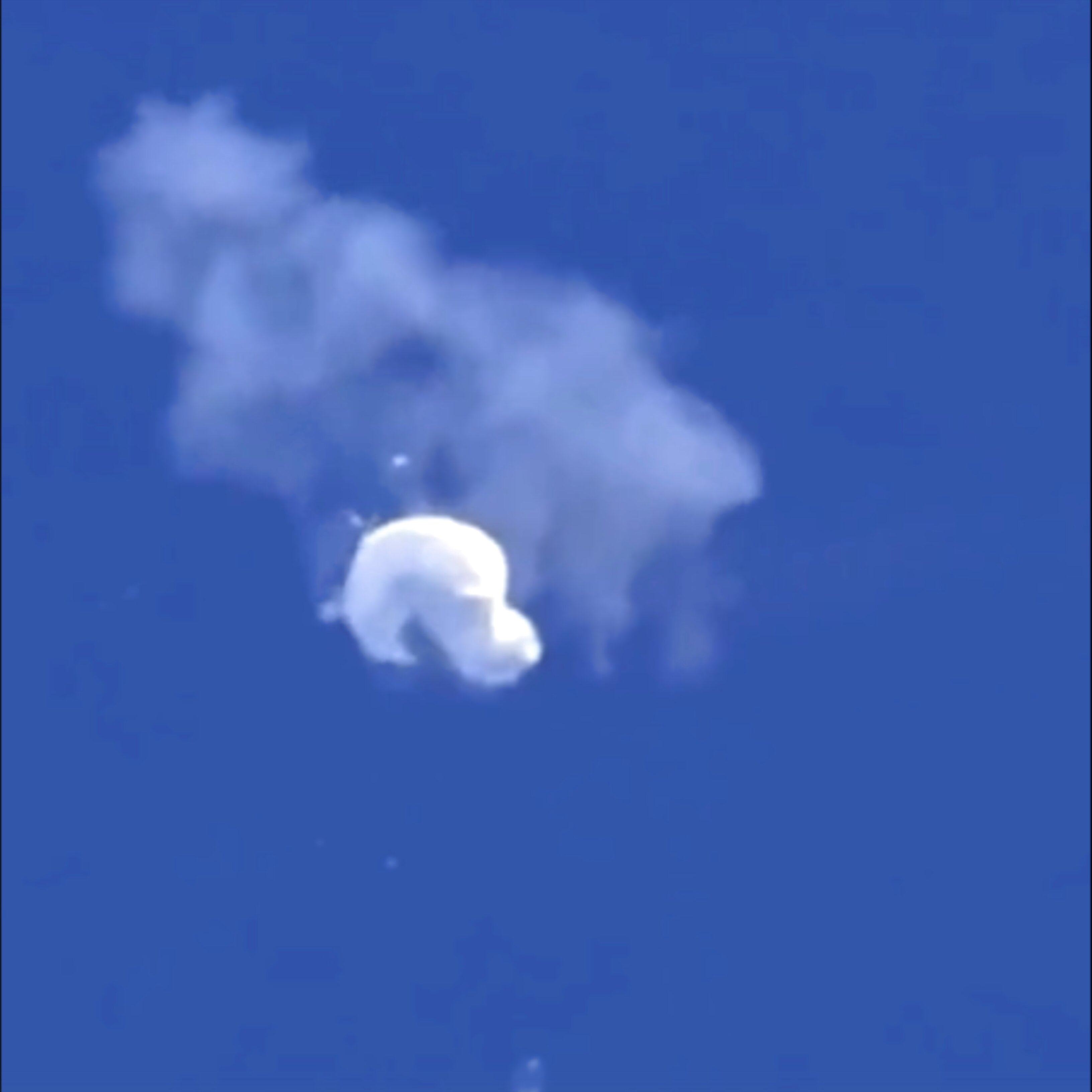
views
A UFO that defies physics? No, it’s not us saying that, but a Pentagon study. In a new draft study, which is yet to be peer reviewed, Sean Kirkpatrick, head of the Pentagon’s All-domain Anomaly Resolution Office (AARO), and Harvard University’s Avi Loeb has sought to to rule out a number of UAP sightings that appear to be “highly manoeuvrable” objects, using physics.
But first, what is a UAP sighting?
To understand that, let’s first understand what a UFO is. The phrase “unidentified flying object” (UFO) is an aerial phenomena whose cause or identification is unknown to the viewer.
According to a report by USA Today, the word was coined by the United States Air Force in 1952, barely five years after pilot Kenneth Arnold put “flying saucer” to the world’s language. Arnold flew above Mt. Rainier in Washington state in 1947 and witnessed “nine dazzling saucer-like objects.” But he denied initially referring to them as saucers, however, the word had already become well-known.

“UFOs were initially defined as those objects that remain unidentified after scrutiny by expert investigators, though today the term UFO is colloquially used to refer to any unidentifiable sighting regardless of whether it has been investigated,” says the Air Force Declassification Office.
The more technical phrase “unidentified anomalous phenomena” is used by the National Aeronautics and Space Administration to describe “observations of the sky that cannot be identified as aircraft or as known natural phenomena,” says the USA Today report. It was known as “unidentified aerial phenomena” rather than anomalous until December 2022.
NASA initiated a research in October 2022 to enhance UAP data analysis, with the promise of a report on its findings in mid-2023. The research is looking into the nature and sources of UAP, scientific analytical tools, the risk to the National Air Space, and measures to improve air traffic control data acquisition systems.
As per a NASA report, there are five explanatory categories to a UAP:
- Airborne clutter
- Natural atmospheric phenomena
- USG or U.S. industry development programs
- Foreign adversary systems
- Other
What Does the Pentagon Study Say?
The Pentagon and a Harvard astronomer had joined forces to urge for a more scientific approach to examining unexplained aerial phenomena, or UAP, sightings.
Avi Loeb of Harvard and Dr. Sean Kirkpatrick of the Pentagon’s All-domain Anomaly Resolution Office (AARO) collaborated on and shared a draft of a scientific study that is still being peer reviewed. The report seeks to rule out a number of UAP sightings that appear to be “highly agile” objects using physics, said a report by Forbes.
In a nutshell, the report explains, Loeb and Kirkpatrick discovered that if some of the UAP are truly travelling in the seemingly inconceivable directions and speeds that they appear to be, the friction involved should produce a visible fireball and a corresponding radio signature detectable via radar.
Several of the UAPs investigated, however, exhibit no evidence of these markers, said a report by Popular Mechanics.
Despite what appears to be a strong indication of alien activity, the report emphasises that such abnormalities could be explained by more conventional methods, i.e. that our human equipment are simply not sensitive enough to understand what’s going on.

“The lack of all these signatures could imply inaccurate distance measurements (and hence derived velocity) for single site sensors without a range gate capability. Typical UAP sightings are too far away to get a highly resolved image of the object and determination of the object’s motion is limited by the lack of range data.”
In other words, these UFOs could be nothing more than optical illusions caused by sensors, explained the Popular Mechanics report. Loeb had begun the Galileo Project at Harvard University in 2021, with the goal of developing a rigorous scientific approach to understanding UAPs. Although being open to the possibility of an extraterrestrial answer, Loeb is suspicious about the present crop of hazy, out-of-focus material, the report says.
So, Should We Expect More Info on UAPS Now?
Popular Mechanics says such reports on UAPs are likely to become more common as scientists from many agencies and universities attempt to create methods to analyse these currently explainable items. NASA has developed a 16-member UAP study committee to propose a path for further research, and non-profit organisations have also formed to lobby for more serious UAP investigations.
According to an AFP report, for years, reports of unidentified flying objects were filed away with little investigation, except by a corps of alien-believing, conspiracy-theory toting “UFOlogists”. But after a slew of inexplicable sightings from US Navy and Air Force pilots, several years ago the Pentagon decided to pay closer attention.
The central worry was that the sightings could be of unknown aerial surveillance technology China was using to collect intelligence on US defenses. In 2020, the Pentagon set up its Unidentified Aerial Phenomena (UAP) Task Force, using its own acronym for UFOs, to dig deeper into hundreds of cases with the support of the CIA and other agencies.
Some were easily written off as weather balloons or solar reflections. But others were daunting, such as a Navy pilot’s video from 2014 of an oblong aerial object that appeared to move faster and with more maneuverability than the jet the pilot was flying. “What is true … is that there’s footage and records of objects in the skies that we don’t know exactly what they are,” former president Barack Obama said in 2021.
After the Chinese Spy Balloons, US Gets Serious About UAPs
The US government is examining 510 UFO reports, over triple the number in its 2021 file, and while many were caused by drones or balloons, hundreds remain unexplained, according to a report released Thursday, AFP said. The 2022 report by the Director of National Intelligence (DNI) said that 247 “unidentified anomalous phenomena” or UAP reports have been filed with it since June 2021, when it revealed that it had records of 144 sightings of suspicious aerial objects under examination.
In addition, the report said, another 119 reports that had been buried in old records from the past 17 years had been unearthed, leaving it with 510 in total. Most of the new reports come from US Navy and Air Force pilots, it said.
Of those, close to 200 had “unremarkable” explanations: they were balloons, drones or so-called aerial clutter, which covers birds, weather events and airborne plastic bags.
But others haven’t been explained according to the DNI document, an unclassified version of a report delivered to Congress.

Those are the focus of examinations by the Pentagon, US intelligence agencies, and NASA over concerns not that they are alien spacecraft but unknown spying capabilities of rival countries.
The development comes after the US military shot down four objects that suddenly showed up in US airspace, some of which they claimed were spy balloons from China.
A Bold New Era on UAP Studies, or Just Fizz?
The Scientific American argues in a report that the ‘bold new era’ into UAP investigations may not yield great results. As per the report, overlapping technological waves have made flying machines—particularly remote-controlled drones—much more capable and abundant, while also making cellphones and other sophisticated data-gathering equipment nearly ubiquitous, which makes for no surprise in the increase of UAP reports and “coordinated initiatives to investigate them.”
It says the demand for data may progressively clash with a growing armada of amateur, citizen-sky-sleuthing initiatives to chronicle UAPs.
“All organizations, be they governmental, military, scientist, civilian, have their own reporting methods and standards, and those taking their own data all use different technologies. How is anyone supposed to make headway against such a hodgepodge?” Matthew Szydagis, a UAPx team member and an associate professor in physics at the University at Albany, told Scientific American.
With inputs from AFP
Read all the Latest Explainers here



















Comments
0 comment